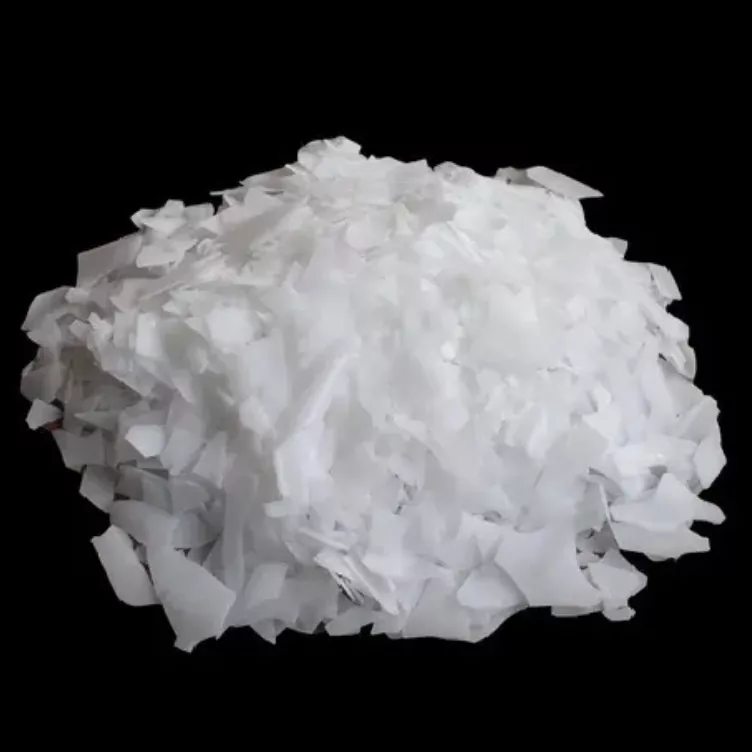What Are PVC Chemical Additives and Why Are They Essential for PVC Products?
2024-11-26
PVC (Polyvinyl Chloride) is one of the most widely used plastic materials in the world, known for its durability, versatility, and cost-effectiveness. From plumbing pipes to flooring, window frames to medical devices, PVC plays a crucial role in various industries. However, the properties of pure PVC are often not sufficient for specific applications. This is where PVC chemical additives come into play. But what exactly are these additives, and why are they so important for the performance and longevity of PVC products? Let's explore the different types of PVC chemical additives and their significance.
What Are PVC Chemical Additives?
PVC chemical additives are substances added to PVC resins during manufacturing to modify, enhance, or improve the properties of the material. These additives are crucial in achieving desired characteristics such as flexibility, UV resistance, fire retardancy, color, and longevity in PVC products. Without these additives, PVC products would have limited functionality and performance.
These additives are typically used in small quantities but have a significant impact on the final product’s properties. Depending on the intended use, the right combination of PVC additives is carefully selected to tailor the material to specific requirements.
Types of PVC Chemical Additives
There are several types of chemical additives used in PVC production, each serving a different purpose. Some of the most common types include:
1. Plasticizers
Plasticizers are the most widely used additives in PVC manufacturing. These chemicals are added to make the PVC more flexible and softer, making it suitable for products like flexible tubing, wire coatings, and flooring. Without plasticizers, PVC would be too rigid and brittle for many applications. The most common plasticizers used in PVC are phthalates, although alternatives are being developed due to health and environmental concerns.
2. Stabilizers
Stabilizers are added to prevent the degradation of PVC during processing, particularly when exposed to heat and UV radiation. Without stabilizers, PVC can break down, discolor, and lose its mechanical properties. Lead-based stabilizers were once widely used but are being replaced by calcium-zinc stabilizers, which are considered more environmentally friendly. Heat stabilizers are also important to ensure that PVC products can withstand high temperatures during manufacturing without losing their strength.
3. Lubricants
Lubricants are used in the PVC manufacturing process to reduce friction between the PVC and the processing equipment, improving the flow of the material. They help achieve a smooth finish on products and ensure that the resin flows easily during extrusion or molding. Lubricants are especially important in the production of PVC sheets, pipes, and films.
4. Flame Retardants
Flame retardants are essential additives for making PVC materials safer in fire-prone environments. These chemicals slow down the spread of fire and help in preventing the ignition of the material. Antimony trioxide and aluminum hydroxide are commonly used flame retardants in PVC applications, especially in wiring cables, roofing materials, and furniture.
5. UV Stabilizers
PVC products used outdoors, such as siding, fencing, and window profiles, are exposed to UV radiation, which can cause degradation over time. UV stabilizers are added to protect the material from UV damage, preventing it from becoming brittle and discolored. Hindered amine light stabilizers (HALS) and benzotriazoles are commonly used UV stabilizers in PVC.
6. Colorants and Pigments
PVC is typically a white or translucent material, but it can be made into a variety of colors using colorants and pigments. These additives provide the desired color and appearance for PVC products such as tiles, clothing accessories, and packaging materials. Pigments also ensure that the color remains stable over time, especially when exposed to light and heat.
7. Antioxidants
PVC materials can be prone to oxidation, especially when exposed to heat, air, or UV radiation. Antioxidants are added to prevent oxidation and maintain the material’s integrity. These additives help in prolonging the life of the product and maintaining its physical properties, such as flexibility and tensile strength.
Why Are PVC Chemical Additives Important?
1. Enhanced Performance
PVC on its own, although durable, is often too rigid for many applications. By adding chemical additives like plasticizers and stabilizers, manufacturers can improve its flexibility, heat resistance, and processing capabilities, making PVC suitable for a wider range of uses.
2. Increased Durability and Longevity
Additives like UV stabilizers, antioxidants, and stabilizers ensure that PVC products can withstand the elements and last longer without degradation. This is particularly crucial in products like pipes, window frames, and roofing materials, which are often exposed to harsh weather conditions.
3. Cost-Effectiveness
Using PVC additives can significantly reduce the cost of manufacturing, as it allows the use of less expensive raw materials while still achieving high-quality, durable products. By incorporating additives, manufacturers can create versatile products at a lower cost, which ultimately benefits consumers.
4. Safety and Compliance
In industries like construction, healthcare, and electrical, safety is a top priority. Additives such as flame retardants, stabilizers, and anti-microbial agents make PVC safer for use in environments where fire safety and hygiene are essential. Moreover, regulatory standards often require the use of specific additives to ensure compliance with safety guidelines.
How Are PVC Additives Impacting Sustainability?
While PVC additives play a vital role in improving the properties of PVC products, there is an increasing push for more sustainable solutions. Many traditional additives, such as lead-based stabilizers and certain plasticizers, have been linked to environmental and health concerns. As a result, there is a growing trend toward greener alternatives, including non-toxic plasticizers and eco-friendly stabilizers.
Recycling PVC products that contain chemical additives is also a challenge, but ongoing research into recycling technologies aims to make it easier to reuse PVC products, minimizing waste and environmental impact. Companies are focusing on creating additive systems that are easier to recycle and dispose of responsibly.
Conclusion
PVC chemical additives are indispensable in optimizing the performance and functionality of PVC products across a variety of industries. Whether they are improving flexibility, ensuring fire resistance, or enhancing durability, these additives allow manufacturers to create high-performance products that meet the needs of both consumers and businesses. As the demand for sustainable materials grows, the PVC industry is evolving to include greener additives and recycling technologies, ensuring that PVC products remain as safe, durable, and environmentally friendly as possible.



